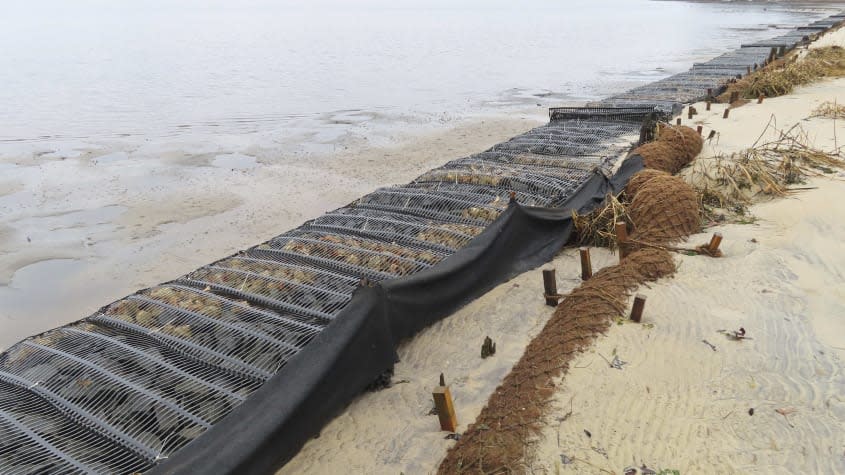Coconuts are becoming an important part of protecting global shorelines

Coconuts are increasingly being used around the world as part of efforts to keep shorelines from eroding.
Strands of coconut husk, known as coir, can be spun into mats or logs that are flexible and able to be molded on uneven areas of shoreline. As The Associated Press explains, the coir biodegrades over time, "but before it does, it is sometimes pre-seeded with shoreline plants and grasses." The mats and logs hold the plants in place so they can take root, and once the coconut-based materials break down, it leaves "the established plants and sediment around them in place to stabilize the shoreline." Because coconut is readily available around the world, this can be a cost-effective and sustainable alternative to barriers made of wood, steel, or concrete.
The American Littoral Society, a coastal conservation group, is using coir as part of a $1.3 million restoration project of an eroded river bank in Neptune, New Jersey. The organization said the project has "already added significantly" to the shoreline, which was hit hard by Superstorm Sandy in 2012. "We're always trying to reduce wave energy while shielding the shoreline, and whenever we can, we like to employ nature-based solutions," American Littoral Society Executive Director Tim Dillingham told AP, adding that it is "relatively inexpensive compared with harder materials."
In Boston, a pilot program is now underway with four floating mats made of coconut fibers, wood chips, and other material being tested to see if they can blunt the force of waves and spur the growth of aquatic vegetation. Julia Hopkins, an assistant professor at Northeastern University, told AP this could easily grow to a network of thousands of mats able to protect large swathes of land. "Coconut fiber is organic material, it's relatively cheap and it's a discard," she said. "It's actually recycling something that was going to be discarded." Learn more about how coconut-based materials work — and where they don't — at The Associated Press.
You may also like
5 hilarious cartoons about Tucker Carlson's bad week
Biden keeps current color scheme for next Air Force One after scrapping Trump design

